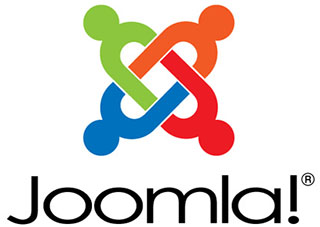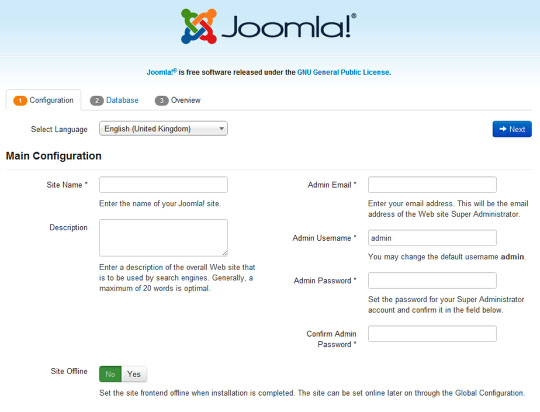
In this tutorial, we will show you how to install Joomla on AlmaLinux 8. For those of you who didn’t know, Joomla is a free, open-source, and popular content management system (CMS) that can be used to build online applications and websites. It uses a PHP application and back-end databases such as MySQL/MariaDB. It supports several operating systems including Linux, Windows, Mac OS, FreeBSD, and Solaris, and easily integrates with Gmail and OpenID.
This article assumes you have at least basic knowledge of Linux, know how to use the shell, and most importantly, you host your site on your own VPS. The installation is quite simple and assumes you are running in the root account, if not you may need to add ‘sudo‘ to the commands to get root privileges. I will show you through the step-by-step installation of the Joomla content management system on an AlmaLinux 8.
Prerequisites
- A server running one of the following operating systems: AlmaLinux 8.
- It’s recommended that you use a fresh OS install to prevent any potential issues.
- A
non-root sudo useror access to theroot user. We recommend acting as anon-root sudo user, however, as you can harm your system if you’re not careful when acting as the root.
Install Joomla on AlmaLinux 8
Step 1. First, let’s start by ensuring your system is up-to-date.
sudo dnf update sudo dnf install epel-release
Step 2. Installing a LAMP server.
An AlmaLinux LAMP server is required. If you do not have LAMP installed, you can follow our guide here.
Step 3. Installing Joomla on AlmaLinux 8.
Now we run the following command to download the latest installation package:
wget https://downloads.joomla.org/cms/joomla3/3-9-28/Joomla_3-9-28-Stable-Full_Package.zip?format=zip
After that, extract the file into the folder /var/www/html/ with the following command below:
sudo unzip Joomla_3-9-28-Stable-Full_Package.zip -d /var/www/html
We will need to change some folders permissions:
sudo chown -R apache:apache /var/www/html/joomla sudo chmod 755 /var/www/html/joomla
Step 4. Configuring MariaDB for NextCloud.
By default, MariaDB is not hardened. You can secure MariaDB using the mysql_secure_installation script. you should read and below each step carefully which will set a root password, remove anonymous users, disallow remote root login, and remove the test database and access to secure MariaDB:
mysql_secure_installation
Configure it like this:
- Set root password? [Y/n] y - Remove anonymous users? [Y/n] y - Disallow root login remotely? [Y/n] y - Remove test database and access to it? [Y/n] y - Reload privilege tables now? [Y/n] y
Next, we will need to log in to the MariaDB console and create a database for NextCloud. Run the following command:
mysql -u root -p
This will prompt you for a password, so enter your MariaDB root password and hit Enter. Once you are logged in to your database server you need to create a database for Joomla installation:
MariaDB [(none)]> create database joomladb; MariaDB [(none)]> create user joomlauser@localhost identified by 'your-strong-passwd'; MariaDB [(none)]> grant all privileges on joomladb.* to joomlauser@localhost; MariaDB [(none)]> flush privileges; MariaDB [(none)]> exit
Step 5. Configuring Apache for Joomla.
Now create a new virtual host file using the following command:
nano /etc/httpd/conf.d/joomla.conf
Add the following lines:
<VirtualHost *:80> ServerAdmin admin@example.com DocumentRoot "/var/www/html/joomla" ServerName joomla.idroot.us ErrorLog "/var/log/httpd/example.com-error_log" CustomLog "/var/log/httpd/example.com-access_log" combined <Directory "/var/www/html/joomla"> DirectoryIndex index.html index.php Options FollowSymLinks AllowOverride All Require all granted </Directory> </VirtualHost>
Save the file and exit. Then, restart the Apache web service to apply the changes:
sudo systemctl restart httpd sudo systemctl enable httpd
Step 6. Configure Firewall.
Allow the firewall to HTTP and HTTPS and reload it with the following commands:
sudo firewall-cmd --permanent --zone=public --add-service=http sudo firewall-cmd --permanent --zone=public --add-service=https sudo firewall-cmd --reload
Step 7. Accessing Web Interface.
Once successfully complete step-by-step installation, Open your web browser and open the URL http://joomla.idroot.us. You will be redirected to the following screen:

Congratulations! You have successfully installed Joomla. Thanks for using this tutorial for installing the Joomla content management system on your AlmaLinux 8 system. For additional help or useful information, we recommend you check the official Joomla website.